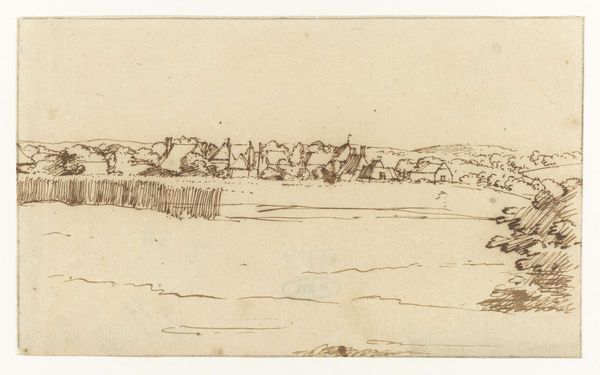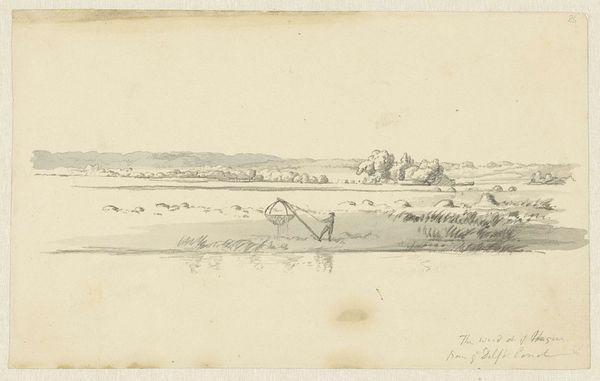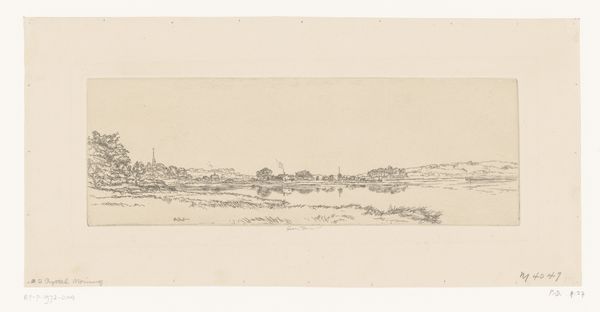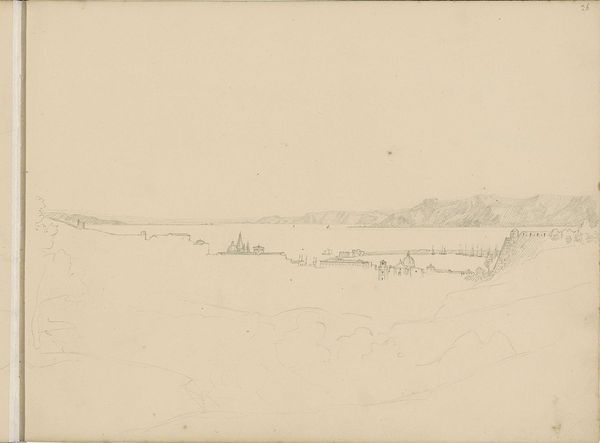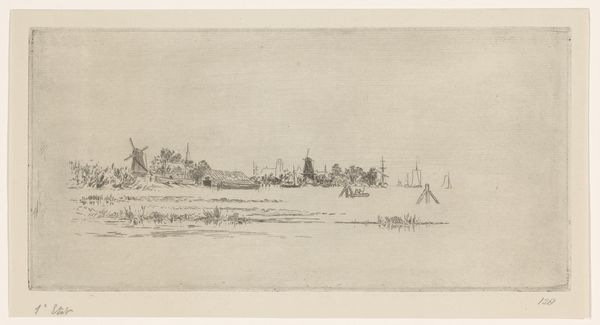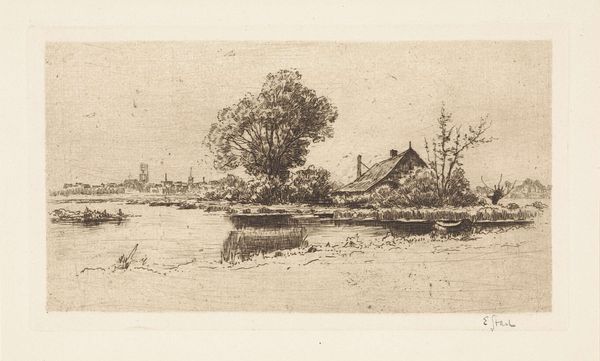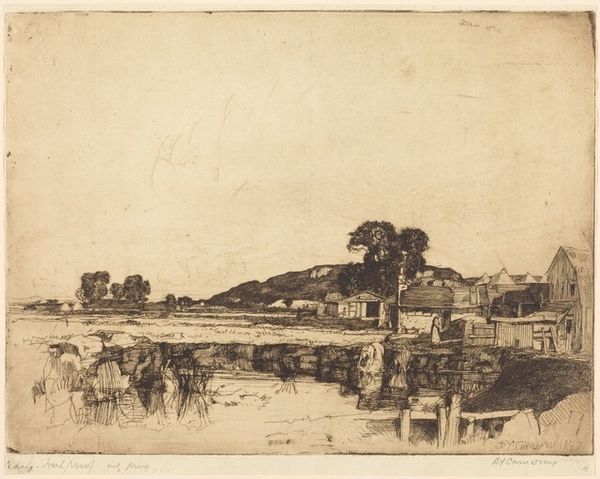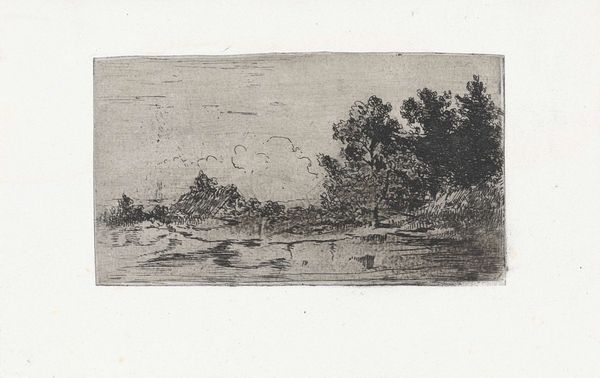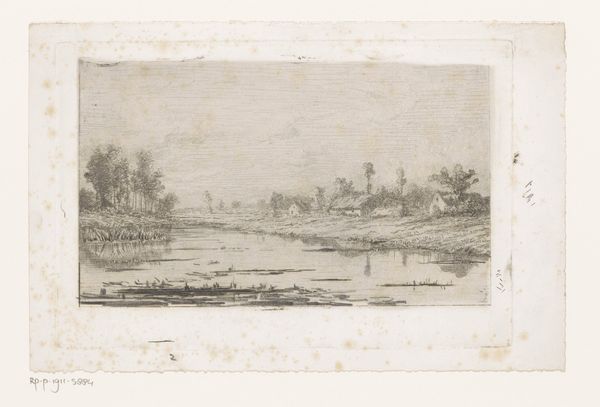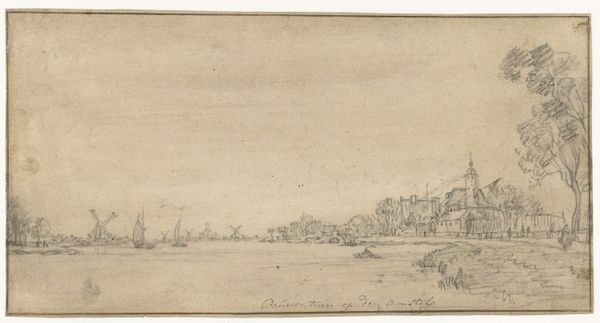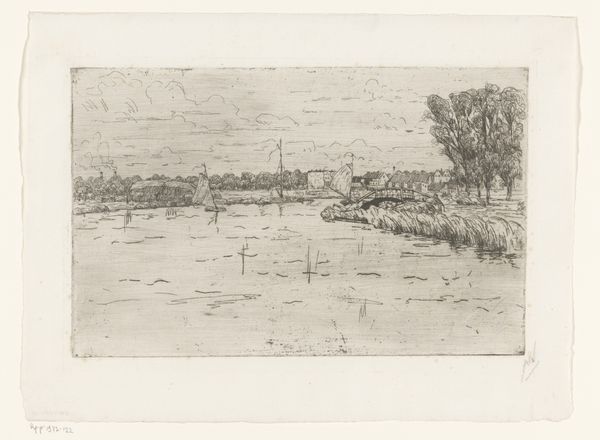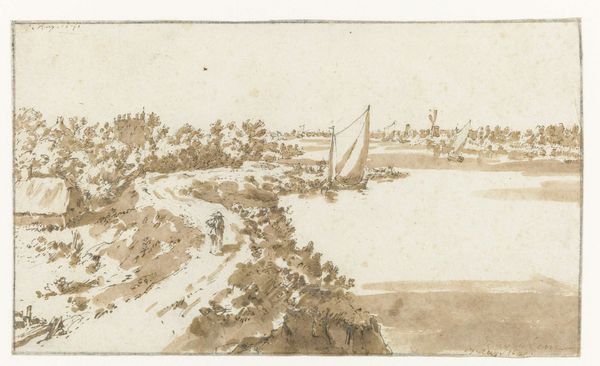
drawing, ink
#
drawing
#
dutch-golden-age
#
pencil sketch
#
landscape
#
etching
#
ink
Dimensions: height 130 mm, width 218 mm
Copyright: Rijks Museum: Open Domain
Constantijn Huygens crafted this pen drawing, “Veer te Dieren,” a depiction of a Dutch landscape. Here, the windmill is not merely an architectural structure, but also a symbol of human ingenuity and dominion over nature. The sails of the windmill evoke the cyclical nature of life, reminiscent of ancient cosmological diagrams where the wheel symbolizes the sun’s eternal journey. In earlier times, similar rotational symbols appeared in religious contexts to represent the ceaseless turn of fate, and this imagery surfaces repeatedly through diverse cultures and epochs. Consider the Buddhist Dharmachakra, or the Celtic Sun Wheel; these prefigure the windmill, representing the circular movement of time and destiny. The windmill is the psychological manifestation of humanity's desire to find order in the chaos of existence. Huygens’ landscape is thus more than a serene scene; it is an unconscious projection of a primal quest for control and understanding. This humble windmill is not just a feature of the landscape, it is an echo of the human spirit, perpetually in motion, forever seeking.
Comments
No comments
Be the first to comment and join the conversation on the ultimate creative platform.
